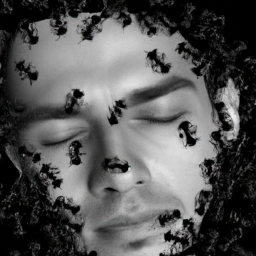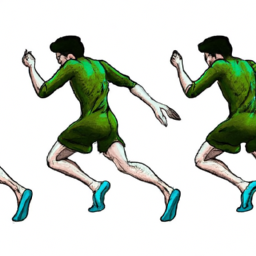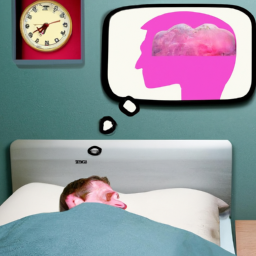As someone who has experienced vivid and realistic dreams, I often wonder if there is a deeper meaning to the fact that our dreams feel so real. Is it just a coincidence, or is there a more profound explanation behind it?
Through research and personal experience, I’ve come to learn that the science of dreaming is complex and fascinating, with various theories surrounding why we dream and what our dreams may signify.
In this article, we’ll explore the phenomenon of ‘real’ dreams and delve into the concept of lucid dreaming. We’ll also examine different techniques for enhancing dream recall, as well as the connection between our dreams and mental health.
Whether you’re someone who frequently remembers their dreams or simply curious about the topic, join me on a journey through the science of sleep and uncovering what it truly means when our dreams feel real.
Key Takeaways
- ‘Real’ dreams are vivid and lifelike, often feeling indistinguishable from waking life.
- Dreams that feel real can reflect emotions and experiences of waking life.
- The brain undergoes different stages of sleep with unique characteristics and functions, including REM sleep when vivid dreams occur.
- Understanding the science behind dreams and keeping a dream journal can reveal hidden insights about the subconscious mind, including patterns and triggers contributing to mental health issues.
The Science of Dreams
Get ready to dive into the fascinating world of dream science, where we explore the mysteries behind why dreams feel so vivid and real. Dreams are a product of our subconscious mind, and they often contain symbols that reflect our deepest fears, desires, and emotions.
Dream symbolism is the study of these symbols and their meanings in order to gain insight into our own psyche. Dream analysis techniques aim to interpret these symbols through various methods such as free association or active imagination. By examining the contents of our dreams, we may uncover hidden aspects of ourselves that we may not be aware of in our waking life. This process can lead to self-discovery and personal growth.
Understanding the science behind how dreams work can help us better understand ourselves and improve our overall well-being. With this understanding in mind, let’s now explore the phenomenon of ‘real’ dreams – when dreams feel so vivid and lifelike that it’s hard to distinguish them from reality.
The Phenomenon of "Real"Dreams
Experiencing vivid sensations and emotions during slumber can be unnervingly convincing, as if the mind has transported to an alternate reality. These dreams that feel real are often referred to as ‘lucid dreams’, where the dreamer is conscious of dreaming and may even have some control over their surroundings.
However, there is another type of dream that feels just as real but lacks the lucidity aspect. Dream symbolism plays a significant role in understanding why certain dreams feel more realistic than others.
For example, dreaming about falling can represent a fear of losing control or failure in waking life. The spiritual significance of these types of dreams lies in their ability to convey hidden messages from our subconscious minds. These messages can serve as warnings or guidance for our waking life challenges.
Understanding the deeper meanings behind these seemingly real dreams can lead to personal growth and self-awareness. Moving forward, let’s explore ways to intentionally induce lucid dreaming experiences for further exploration into our subconscious minds.
Lucid Dreaming
You can take control of your subconscious mind and explore new dimensions through lucid dreaming. Lucid dreaming is the act of becoming aware that you’re dreaming and being able to control the content of your dreams.
Studies have shown that lucid dreamers have higher levels of self-awareness, creativity, and problem-solving abilities. Dream control is a major aspect of lucid dreaming.
Once you become aware that you’re in a dream, you can take control and manipulate the environment around you. This allows for endless possibilities, such as flying, traveling to different realities, or even facing fears head-on in a safe environment.
With practice, anyone can learn how to lucid dream and enjoy the benefits it offers. Now let’s dive into understanding what our dreams mean and how we can interpret them.
Dream Interpretation
Understanding the symbols in your dreams can reveal hidden insights about your subconscious mind and how it relates to your waking life. Symbolic meaning is a crucial aspect of dream interpretation, as each symbol has a unique significance that can vary depending on the individual’s personal experiences and cultural background.
For example, dreaming of flying may represent a sense of freedom for some individuals, while for others, it could signify a fear of losing control. Interpreting nightmares is also an essential part of dream analysis. While nightmares can be terrifying, they often contain valuable messages from our subconscious that we need to acknowledge.
The monsters or villains in our dreams may represent repressed emotions or unresolved conflicts in our waking lives. By exploring these symbols further, we can gain a better understanding of ourselves and work towards resolving any underlying issues.
Understanding the symbolic meanings behind our dreams can provide us with valuable insights into our psyche and help us navigate our waking lives more effectively. In the next section, we’ll explore the relationship between dreams and waking life.
The Relationship Between Dreams and Waking Life
Now, let’s explore how dreams and our daily lives intertwine through small details that we may not even notice. Our dreams can reflect the emotions and experiences of our waking life, whether we realize it or not.
Keeping a dream journal can be helpful in recognizing these connections. Writing down recurring dreams and identifying any common themes or symbols can provide insight into our subconscious mind.
Recurring dreams are particularly noteworthy because they often indicate unresolved issues or emotions in our waking life that need to be addressed. For example, if you frequently dream about an ex-partner, it could signify lingering feelings that need to be processed.
By examining the content of our dreams and reflecting on them, we can gain a better understanding of ourselves and improve our overall mental health. With this in mind, let’s delve into the connection between dreams and mental health.
The Connection Between Dreams and Mental Health
Let’s discover how our dreams can offer valuable insights into our mental health and provide a deeper understanding of ourselves. Mental illness is a complex issue that affects millions of people worldwide. While there are various treatments available, dream journaling has become an increasingly popular tool for those seeking to improve their mental health.
Dream journaling involves writing down your dreams immediately after waking up. By doing this, you gain insight into your subconscious thoughts and emotions, which can help identify patterns and triggers that may be contributing to mental health issues. Additionally, keeping a dream journal can also help with improving sleep quality since it allows for the release of any thoughts or worries before going to bed.
In conclusion, dream journaling is a simple yet effective technique that anyone can use to gain a deeper understanding of themselves and potentially improve their mental health.
Now let’s delve into the science of sleep and explore how it impacts our daily lives.
The Science of Sleep
I’ll start by discussing the science of sleep.
As we drift off into slumber, our bodies go through different stages of sleep, each with unique characteristics and functions. The quality and quantity of our sleep have profound impacts on both physical and mental health, affecting everything from immune function to mood regulation.
Unfortunately, many people suffer from common sleep disorders like insomnia or sleep apnea, which can disrupt these critical processes and even impact the content of our dreams.
The stages of sleep
While you’re dozing off, your brain undergoes several stages of sleep, each with its distinct characteristics and functions. These stages can be broadly categorized into two: Non-Rapid Eye Movement (NREM) and Rapid Eye Movement (REM).
NREM sleep consists of four stages, each characterized by a different pattern of brain waves. In stage 1, which lasts for only a few minutes, you experience light sleep and may have sudden muscle contractions or jerks. Stage 2 is marked by slower brain waves but also has occasional bursts of rapid activity called ‘sleep spindles.’ Stages 3 and 4 are deep sleep stages where the brain emits slow delta waves that help in physical restoration.
During REM sleep, the brain becomes highly active while the body remains mostly immobile except for irregular breathing and eye movements under closed eyelids. It’s during this stage that we tend to dream vividly as our brains simulate complex scenarios using memories from our waking life. The duration of each REM cycle increases as we progress through the night, with the first one lasting only a few minutes and the last one up to an hour.
Now that we know about the different phases of sleep, let’s dive into how it affects our physical and mental health.
The impact of sleep on physical and mental health
Understanding how sleep affects your physical and mental health is crucial for maintaining overall well-being. Sleep hygiene is essential for quality sleep, which includes establishing a regular sleep schedule, minimizing noise and light disruptions, and avoiding stimulating activities before bedtime. Poor sleep hygiene can lead to various health problems such as obesity, diabetes, cardiovascular diseases, and impaired cognitive function.
Another critical aspect of sleep’s impact on our health is the role of dreams in memory consolidation. Dreams occur during the REM (rapid eye movement) stage of our sleep cycle when our brains are highly active. This stage is crucial for consolidating memories and processing emotions. Dreams also play a vital role in creativity as they provide an avenue for exploring new ideas and perspectives.
Understanding these aspects of sleep can help us appreciate its significance in our lives. As we delve deeper into understanding the impact of dreams on our health, let’s explore common sleep disorders and their effects on dreaming…
Common sleep disorders and their effects on dreaming
Sleep disorders can have a significant impact on the quality and content of our dreams, making it important to recognize and address them.
One common sleep disorder that affects dreaming is sleepwalking. Sleepwalkers often experience vivid and realistic dreams, which can be dangerous if they act out their dreams while asleep. To prevent sleepwalking episodes, it’s essential to create a safe sleeping environment by removing any potential hazards from the bedroom.
Another sleep disorder that can affect the content of our dreams is nightmares, often associated with trauma or stress. Nightmares are vivid and disturbing dreams that can leave us feeling anxious or fearful upon waking up. It’s important to seek professional help if nightmares are interfering with daily life, as therapy can help individuals process trauma and reduce the frequency of these distressing dreams.
Understanding how sleep disorders affect dreaming can help us take steps towards improving our overall sleep quality.
In the next section, we’ll discuss techniques for enhancing dream recall without interrupting our natural sleep patterns.
Techniques for Enhancing Dream Recall
Utilizing memory techniques can aid in bolstering dream recall, allowing individuals to better remember the intricacies of their dreams. One such technique is mnemonic devices, which involve creating associations between different pieces of information to make it easier to remember. For example, using an acronym to remember a list of items or a rhyme to remember specific details.
Another effective method is dream journaling, where individuals write down their dreams as soon as they wake up. This helps solidify the memories and gives them something tangible to refer back to later on.
Enhancing dream recall can be challenging at first but with practice and dedication, it can become easier over time. It’s important to set aside dedicated time each day for recording dreams and experimenting with different memory techniques until finding one that works best for you. By improving dream recall, individuals may gain deeper insights into their subconscious mind and potentially unlock hidden creativity or problem-solving abilities within themselves.
Looking towards the future of dream research, scientists are continuously exploring ways in which technology can be used to better understand the complexities of dreaming and its potential benefits for mental health. With advancements in brain imaging technology, we may soon have a greater understanding of how our brains process dreams and what impact they have on our overall well-being.
The Future of Dream Research
You’ll be excited to learn about the cutting-edge technology that scientists are using to delve deeper into the mysteries of dreaming and its potential effects on mental health.
With advanced brain imaging techniques like fMRI and EEG, researchers can observe brain activity during sleep and analyze patterns of neural activity associated with different stages of dreaming.
They can also experiment with dream manipulation, using methods such as targeted electrical stimulation or auditory cues to influence the content of dreams.
However, there are ethical concerns surrounding this kind of research. Some worry that manipulating dreams could have unintended consequences or infringe upon individuals’ autonomy.
Others argue that it is important to understand how dreams impact mental health and well-being in order to develop effective therapies for conditions such as PTSD or depression.
As the field continues to evolve, it will be important for scientists to balance their desire for knowledge with their responsibility to uphold ethical standards and protect human subjects from harm.
Frequently Asked Questions
Can dreams predict the future?
Is it possible for dreams to predict the future? While there is no scientific evidence of premonition possibility, some people believe in their predictive power. However, it’s important to approach dream interpretation with caution and seek professional guidance.
Why do some people experience recurring dreams?
Recurring dreams could signify unresolved emotional issues or trauma. Psychological analysis can help identify the cause and resolve it. Lucid dreaming techniques allow for conscious control of these dreams, aiding in their resolution.
Is it possible to control the content of our dreams?
I can control the content of my dreams through lucid dreaming and dream journaling. With practice, I’ve learned to recognize when I’m dreaming and take control of the narrative. It’s a powerful tool for self-discovery and problem-solving.
Can dream symbols have different meanings for different people?
Dream symbols can have individual interpretation and psychological significance. Our personal experiences, cultural background, and emotions influence how we perceive dream imagery. Understanding these meanings can aid in self-discovery and growth.
How do cultural and societal factors influence dream interpretation?
Dream symbolism varies across cultures, as beliefs and societal norms play a role in interpretation. Personal beliefs also impact how we interpret dreams. Understanding these factors can aid in helping others decode their subconscious mind.
Conclusion
In conclusion, the experience of having dreams that feel real is a common occurrence that can be explained by science. There are various ways to understand this aspect of our subconscious mind, from the phenomenon of ‘real’ dreams to lucid dreaming and dream interpretation.
Furthermore, research has shown that our dreams are closely connected to our mental health and can even reveal important information about our waking life. Understanding the science of sleep and techniques for enhancing dream recall can help us better explore this mysterious world within ourselves.
As we continue to delve deeper into the study of dreams, there’s much potential for discovering new insights about ourselves and unlocking hidden aspects of our psyche. So next time you have a vivid dream that feels all too real, remember that it’s just another fascinating aspect of the complex human experience.









